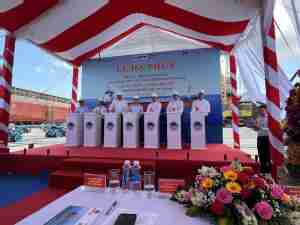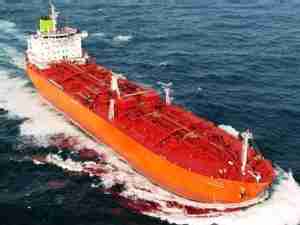The 400,000-ton so-called Chinamax vessels are being rolled out starting in 2011 by Vale to cut the cost of iron ore freight into China but coal is another natural commodity for their use, they said.
The bigger the ship the lower the transport cost of bulk commodities and this is becoming increasingly important as the price of commodities in general rises, shippers and other Indian importers said on the sidelines of a Coaltrans conference in Delhi.
The introduction of these huge bulk carriers is expected to cut freight rates which have already come under pressure from the amount of new vessels coming into the market.
"It is only a matter of time before Vale's Chinamax ships for iron ore start to be used for coal," Adani Enterprises head of coal and carbon Vinay Prakash said.
Between them, Adani and Bhatia International bring in around 70 percent of India's total thermal coal imports - projected to rise to 140 million tonnes in fiscal 2012.
Indian importers are particularly price-sensitive and keen to examine all possible ways of cutting the delivered cost of coal because prices are high and they have to look ever further afield to source coal from new origins.
Adani was the first Indian importer to use 120,000 ton small capesize vessels which it brings into its own Mundra port - for years the only cape port in India, which gave Adani an advantage over competitors because cape freight is usually cheaper.
India now has three ports which can discharge cape vessels - Mundra in the north and Gangavaram and Krishnapatnam in the south, other ports take 75,000-ton panamaxes and 50,000-ton handymaxes.
Krishnapatnam port in Andhra Pradesh on India's East Coast will be able to discharge capes this year, a Krishnapatnam Port executive said.
"We would eventually be able to discharge 400,000-ton vessels but it would have to be offshore, at anchorage," he said.
Even India's biggest ports would need to be greatly deepened to take 400,000-ton ships or one or two purpose-built, dedicated ports would be needed, shipping sources said.
"Of course, India is a natural market for Chinamaxes to bring coal from Indonesia but you'd need to load at anchorage and have dedicated ports on the Indian side," said a source at another large Indian importer of Indonesian and South African coal.
"I think it will definitely happen and within the next few years but really only for Indonesian coal because you won't be able to load a ship that big anywhere else," said a shipping source who declined to be identified.
The bulk of India's 2010 coal imports of over 80 million tons came from Indonesia.
"Adani is likely to be the first in line again," Prakash said.
"Because trimming costs to gain the full advantage of freight and port capabilities is vital to have a competitive edge in such a price-driven market," he added.
Indian importers have in the past year started to diversify their coal sourcing beyond Indonesia and South Africa and to take trial cargoes from Colombia and Russia.
Although Adani imports mostly Indonesian and South African coal - around 20 million tonnes from Indonesia in 2010 - it was the first importer to take a Colombian cargo, is looking at Colombian term contracts and this week bought its first Russian shipment, he said.
"When the difference in delivered prices between coal origins shrinks to less than a dollar, Indian importers will think seriously about alternatives to South Africa, he said.
We have made ourselves ready to take coal from anywhere in the world," he said. (Reuters)









